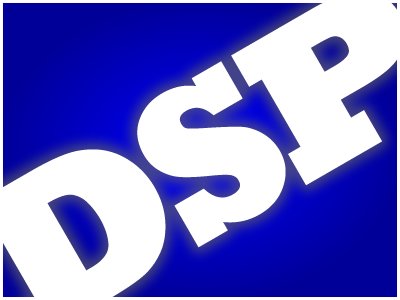
Real-time optimisation of ad space purchases: a chat with André Taliercio from Steerads

Olivier Dupin: Steerads is a North-American start-up, Canadian to be exact. Can you resume for us the history of your project?
André Taliercio: We are both an American and Canadian company. American because the market is mostly in New York, Canadian because our optimisation algorithms are based on “machine learning”, more precisely on “deep learning”. One of the founders of deep learning is Yoshua Bengio; Yoshua is the scientific manager at Steerads.
In 2007, I was Chief Revenue Officer of an online music company with a business model based on ad revenue. I noted at the time that digital ads were a black box where intermediaries stuffed themselves on commissions while providing uncertain and unconvincing results.
It was then that the exchange appeared, as well as Real Time Bidding. We convinced Professor Bengio about the opportunity to develop the algorithms based on deep learning and dedicated to the optimisation of ad bids. The first results were more than encouraging.
OD: Steerads offers to optimise ad investments in digital media with the algorithms inspired by trading on financial markets. How is your approach different from other actors in the sector?
AT: Our approach consists of determining, in real time, an optimal price, based on the user profiles and their intentions. We are the only ones who use deep learning.
Classical machine learning is supervised and establishes direct links between observed input configurations and what we are looking to predict (for example the presence of a keyword in a page or in an ad, and the fact that the user clicked it or acted in an interesting way).
Deep learning uses unsupervised learning to establish links between everything that is observed, even when the user does not act in an interesting way (clicking, buying, etc.). It is important as users rarely respond to ads.
As such, we are able to extract deeper semantic links (with several representation levels) between different observed variables, and better generalise.
“We don’t consider the Click Rate (CTR) important.”
OD: What were your returns on your experience at the end of 2011?
AT: The returns were more than satisfying: the DSP give us their data for free (old campaigns) to analyse and we show them how our algorithms would have improved their performances in the rates that are included between 30 and 100% for clicks, and even more for other actions. Our algorithms will be put to scale (to manage the immense volume available).
OD: The click rate on ad banners on the net has continued to decline over the past fifteen years. At the same time, the “image” ads take part in the formation of the perception of consumers vis-à-vis a brand. Is the click rate a universal indicator? Can we make an image on the web?
AT: We don’t consider the click rate (CTR) as important as the advertiser has nothing to do if there is no transformation (conversion into action that translates into eventual sales). Nonetheless, we can use it to test the creativity of an ad (before undertaking an action you have to click). The more the user is targeted, the more the chances of a winning action. Branding is possible, especially in RTS where we can fairly easily target well and bid low.
OD: Steerads is at the crossroads of two optimisation technologies: cost optimisation with RTB – real time bidding, and optimisation with behavioural profiles of internet users exposed to the ad. Which of the two approaches is more important for you? Is Steerads performing well on both?
AT: In fact cost optimisation stems from the quality of profiles that we receive – through the exchange – to make our algorithms run. This quality is fleeting at the moment. We try not to purchase third party data (Bluekai or Exelate) to not have our bids rise too much.
Our model makes a very high number of bids and immediately tests the reaction, so we don’t have static profile categories, but a moving mass that continually adjusts the performance of the algorithms.
The improvement of the quality of data on users should more and more come from editors, as they have the capacity to better control and know the profile of their visitors.
“RTB will attract a premium because advertisers and agencies are attracted by the combination of transparency and performance.”
OD: For now, outside of search engines, RTB – real time bidding – is limited to unsold ad spaces and to long tail content on the internet. Do you think that this approach can be generalised to premium content and to a larger stock of available ad space?
AT: The RTB market is in its infancy and thus easier for now to sell the unsold, either by editors themselves, or by ad networks. We think that RTB will attract a premium because the advertiser and agencies are attracted by the combination of transparency and performance offered by RTB.
It can be in the form of a private exchange, private auction etc.. but the market can only develop in this direction. Those that would like to resist this trend are those that want to protect the margins that will no longer be competitive in 18 months.
OD: The number of users of web mobile will soon pass the number of users of the internet from a PC. Smartphones, being an intimate and personal object, what factors do you think will be the key to success of ads on this media?
AT: Exactly the same. The smartphone is a different vehicle that adds a local factor. In all cases it means well targeting an ad in regards to a profile and an intention. The smartphone introduces a notion that allows you for specific geographical targeting. This opens the local market. RTB for mobile will develop in the same way.
The challenge for agencies/DSP/trading desk will be to allocate/dispatch budgets in real time: if a campaign performs well on Facebook at a specific time and in a specific geographic location, the budgets must be able to be increased in real time to amplify the performance.
OD : Google, then Yahoo and Microsoft were the first to put in place optimisation mechanisms for ad purchases for their own domains and for third party sites in the long tail. Do you think that a “meta actor” can emerge? If yes, what are the risks and opportunities for advertisers?
AT: This market is passionate for me because everything is open and possible; it is one of our motivational factors. You can’t have a complex in front of the big players.
Google created a RTB exchange based on the purchase of DoubleClick; they were bought by a DSP (Invite) and a SSP (Admeld), so they have a complete chain. The clients are not impressed and are in a holding pattern. Yahoo bought Right Media, but they never really opened it given their problems, we’re talking about a spin-off re-sale. Microsoft threw in the sponge and based its future in this field on AppNexus.
My opinion is the future of RTB resides in the managers of pipelines like AppNexus, where it is possible to enforce your own bidder or other technologies; Mediamath also seems to be taking this approach. Invite will have to open up.
So we see a big opportunity for us: the externalisation of optimisation, which is a complex technology, a shift which requires enormous investments and where the skills are scarce.
“The Bluekais and Exelates have developed on the weaknesses of user data collection by editors.”
OD : Finally, the heart of the matter, are the data available and useable. What place for content editors within this new competitive arena?
AT: The Bluekais and Exelates developed on the weaknesses of user data collection by editors on their sites and the “data linkage”. They now have the opportunity to see “first party data”, thus increasing their revenues by sending this richer data to the exchange.
OD : What do you think of the differentiation through creativity of the message, campaign devices and content? Are advertisers now condemned to becoming experts in data mining?
AT: No, it’s the opposite. Data mining is what we do, in this way, they can concentrate on the creativity of the message. The error is to want all the technologies, divert precious resources and forget their core profession.
OD : Data mining and “advertising creativity” are two disciplines that are traditionally far apart, even in opposition, especially in France. How can you imagine the cohabitation of these two cultures within agencies and intermediaries mandated by brands?
AT: Agencies must remain competitive in creativity and be transparent in the activities and margins. Having a trading desk may not be a good idea, even if it’s tempting.
You have to externalise the treatment of data mining, if not the agencies will weaken and leave their place to new players who will be very specific in creativity and will be very organised on outsourcing skills.
I would also like to add that machine learning can be used to exploit a large range of ads by adapting their particular selection to the user profile. As such, rather than producing two, three or four ads, the advertiser can create a family of ads that vary in the combination of different elements (choice of certain words or phrases, choice of visual elements, size, etc.).
Then, the sort of algorithm that we have allows us to better target variations that function the best according to the context, will adapt to the evolution of preferences, etc.
OD: André Taliercio, thank you for the chat.
AT: My pleasure.









